INTERNACIONAL
Pontiffs and presidents: White House-Vatican relationship stretches a century, including fighting communism
The Vatican and White House have for decades kept a close relationship, with various popes and presidents meeting in the nation’s capital and in Vatican City across the years.
Pope Francis died on Easter Monday at the age of 88, following years of health issues, including chronic lung disease. Francis was the head of the Roman Catholic Church from 2013 until his death, and had met with three U.S. presidents across his tenure.
Francis’ last high-profile meeting with a U.S. leader was held just hours before his death, when Vice President JD Vance traveled to Italy for the Easter holiday and met with the pope on the most holy day for Christians.
«I know you’ve not been feeling great, but it’s good see you in better health,» Vance told the pontiff Sunday.
FAITH LEADERS REFLECT ON POPE FRANCIS’ DEATH, PAPACY AND LASTING LEGACY: ‘MADE HIS MARK’
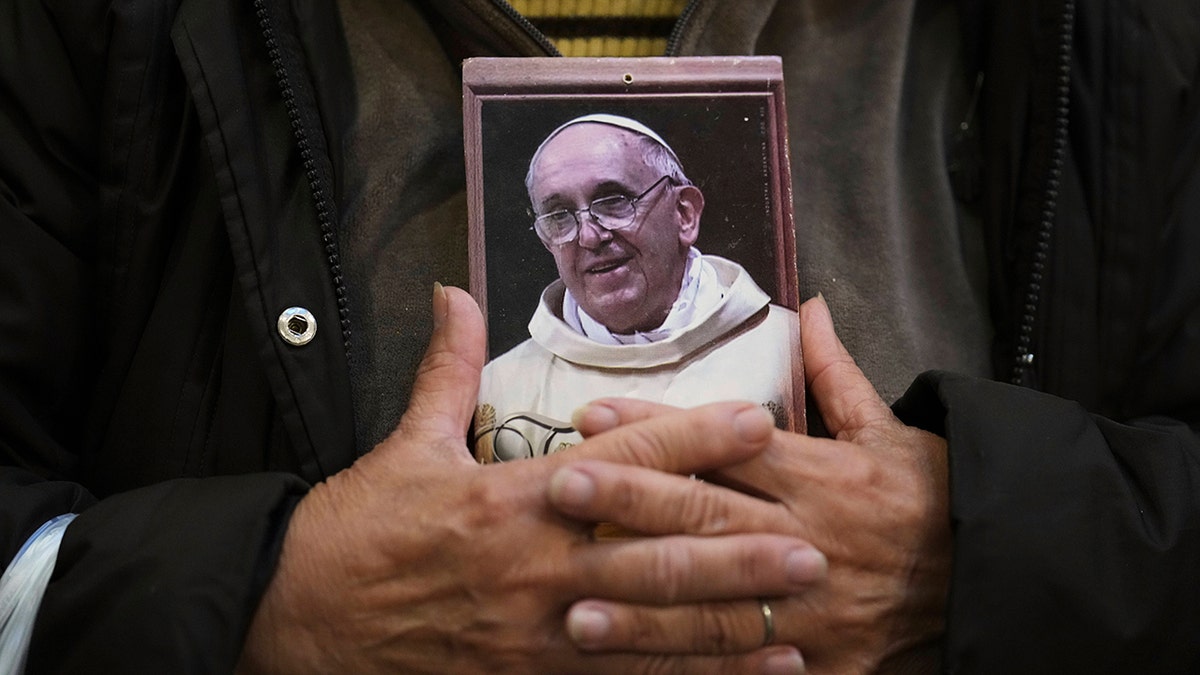
A person holds a portrait of late Pope Francis at the Basílica de San José de Flores, where he worshipped as a youth, following the Vatican’s announcement of his death, in Buenos Aires, Argentina, Monday, April 21, 2025. (Gustavo Garello/AP)
«I pray for you every day,» Vance said. «God bless you.»
Following Francis’ death, Fox News Digital took a look back on high-profile meetings and friendships the Vatican and White House have forged across the years.
Reagan and Pope John Paul II look to thwart communism
Amid the Cold War in 1982 – just years before the Berlin Wall fell in 1989 and the dissolution of the Soviet Union in 1991 – President Ronald Reagan and Pope John Paul II met at the Vatican.
PHOTO GALLERY: POPE FRANCIS THROUGH THE YEARS
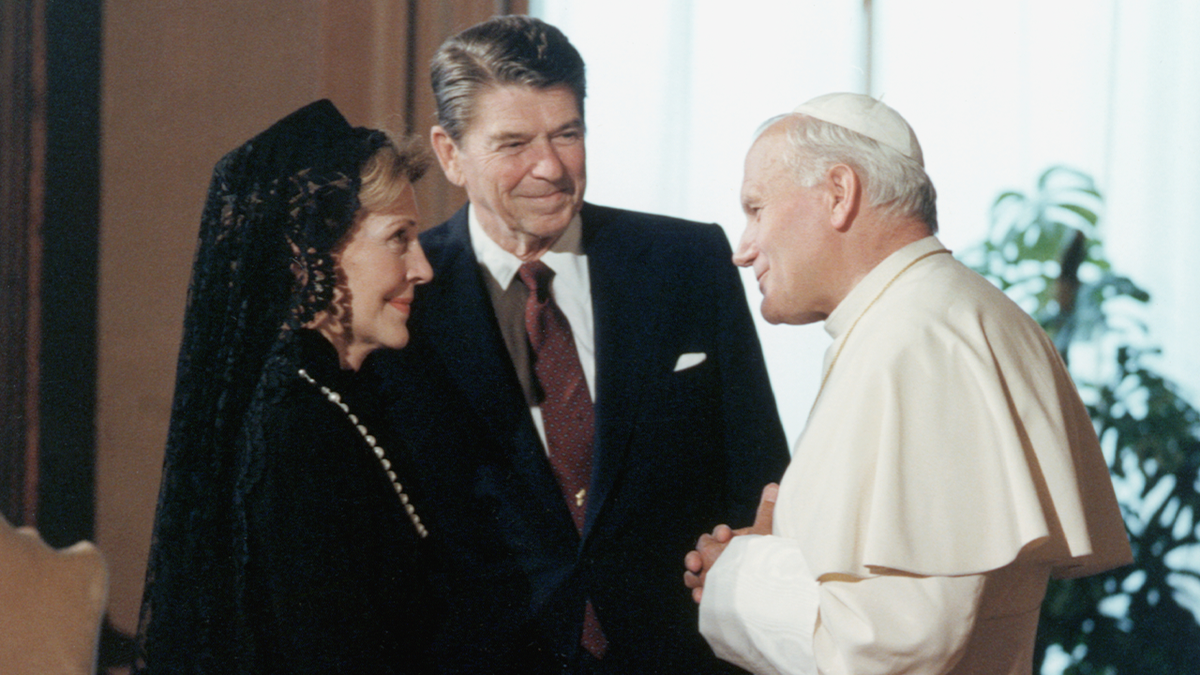
Pope John Paul II greets President Ronald Reagan and first lady Nancy Reagan, on their visit to the Vatican. (Corbis/Corbis via Getty Images)
The meeting marked the first time a president and pope met alone behind closed doors, a 1982 article detailing the visit reported, and came roughly a year after both had survived assassination attempts just weeks apart in 1981. The meeting marked the beginning of the pair’s close friendship as they worked to defeat the growing threat of communism on the world stage.
Two years later, the pair met again in Fairbanks, Alaska, where they delivered messages of peace in a world on the edge as tensions between the communist Eastern Bloc and the capitalist Western Bloc flared.
«In a violent world, Your Holiness, you have been a minister of peace and love. Your words, your prayers, your example have made you – for those who suffer oppression or the violence of war – a source of solace, inspiration, and hope,» Reagan said. «For this historic ministry the American people are grateful to you, and we wish you every encouragement in your journeys for peace and understanding in the world.»
The two world leaders’ friendship was rooted in their disgust of communism, socialism and atheism that had gripped the Soviet Union and Eastern Europe. The pope and the Reagan administration worked closely to promote the Solidarity labor movement in Poland, John Paul II’s home country, which encouraged citizens to reject communism in the satellite state of the USSR, the Associated Press previously reported.
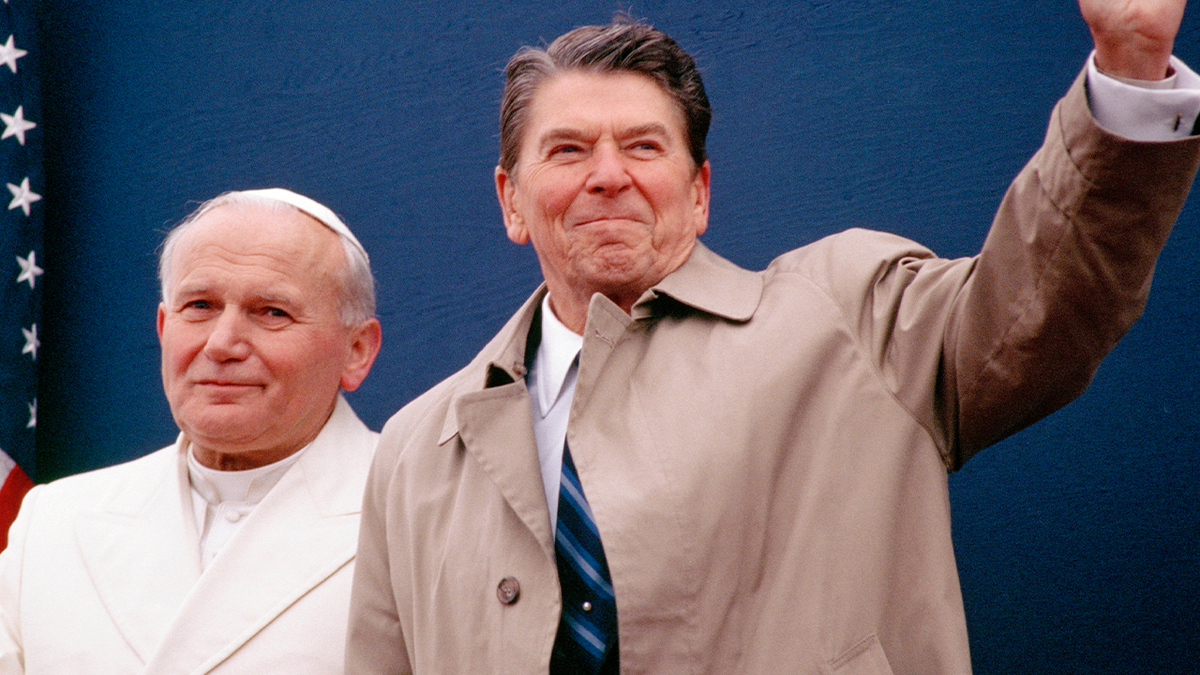
President Ronald Reagan and Pope John Paul II meet, along with U.S. and Vatican officials, at Fairbanks International Airport on May 2, 1984, in Alaska. (David Hume Kennerly/Getty Images)
The Vatican has denied a formal alliance with the U.S. during the promotion of the Solidarity labor movement, but has said in more recent years that Pope John Paul II and Reagan shared a common goal of fighting totalitarianism, the Associated Press reported in 2004.
REAGAN, JOHN PAUL II UNITED IN PURPOSE
In 1989, Poland became the first country in the Eastern bloc to hold semi-free elections, which resulted in a resounding win for the Solidarity movement and led to the dissolution of the communist government in Poland. The win had a domino effect on other nations as 1989 became known as the year communism fell, including the destruction of the Berlin Wall later that year and the eventual end to the Soviet Union in 1991.
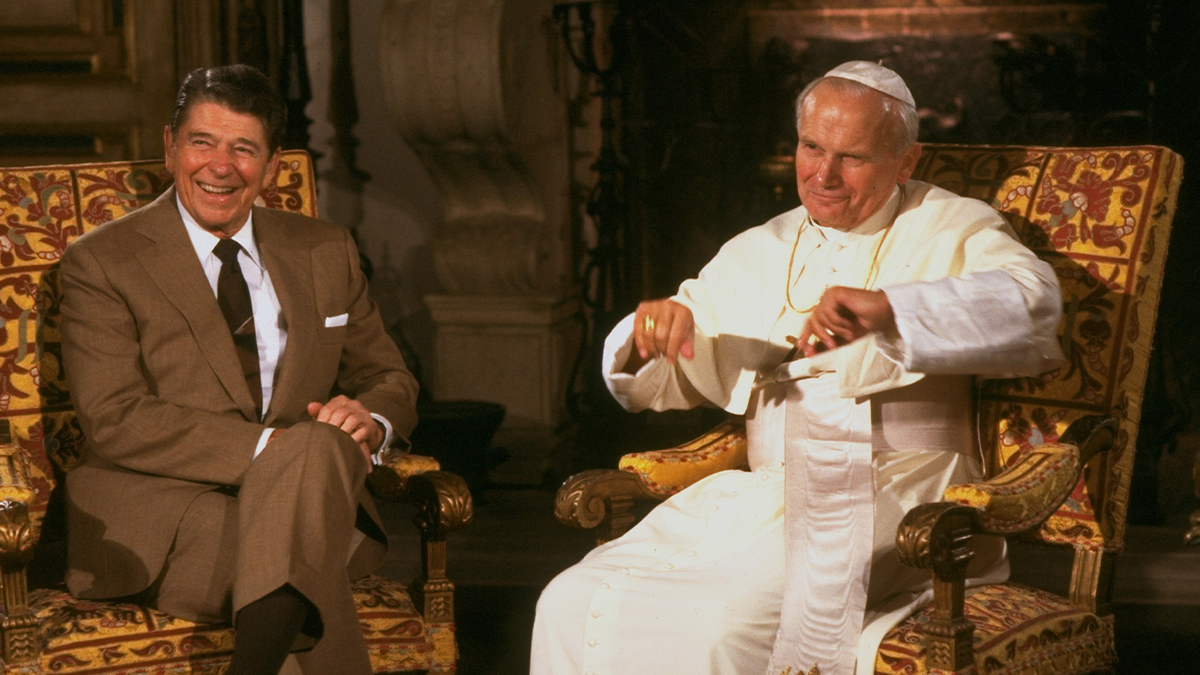
President Ronald Reagan sits with Pope John Paul II in Vizcaya Mansion. (Diana Walker/Getty Images)
«Pope John Paul II and President Reagan worked together to bring an end to atheistic Soviet communism,» former Republican Gov. Scott Walker wrote in a 2020 Washington Times op-ed of Reagan and Pope John Paul II. «The two had a divine plan to stop the Soviet empire that was engaged in a war on religion and individual liberties. The work of a pope and a president helped bring about the collapse of communism and yielded more freedom and opportunity for people all over the world.»
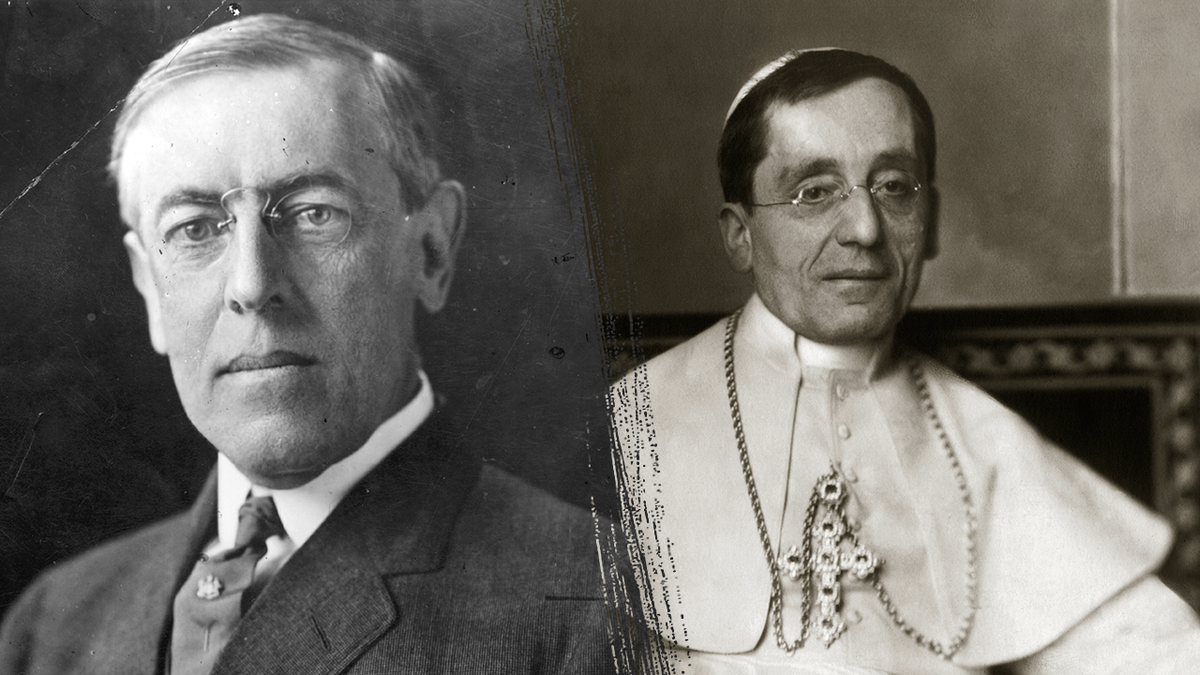
Woodrow Wilson, the 28th president, and Pope Benedict XV met in 1919. (Getty Images)
Wilson becomes first president to meet with pope
Democrat Woodrow Wilson in 1919 became the first U.S. president to meet with a pontiff, opening the doors to normalizing an open line of communication between Washington and Vatican City.
Wilson was traveling in Europe following the end of World War I and «called upon his Holiness Pope Benedict XV,» according to an article published in America, a Catholic magazine, that year.
VANCE WAS ONE OF POPE FRANCIS’ LAST VISITORS
«The President’s arrival was announced by the Master of the Chamber to the Pope, who awaited Mr. Wilson in the Throne Room,» the magazine reported at the time. «The President was admitted immediately to the presence of the Holy Father, who welcomed him most cordially. They spent about a half hour together. It is not, of course, officially known what were the subjects which they discussed.»
The meeting, which came at a time of ongoing anti-Catholic sentiment stemming from the influx of Catholic immigrants at the turn of the century, set the standard for presidents forging relationships with the Vatican – though such meetings did not become normalized until decades later.
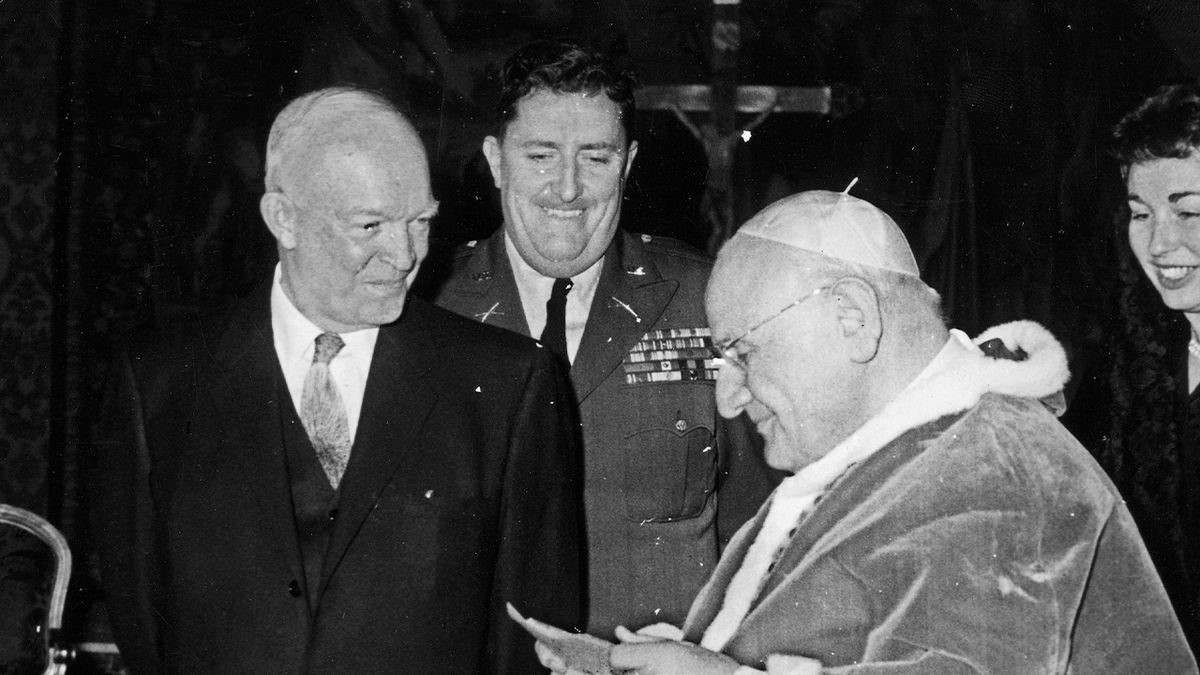
Dwight D. Eisenhower at an audience with Pope John XXIII, together with an official and his daughter-in-law Barbara Eisenhower Thompson, Vatican City, December 1959. (Mondadori via Getty Images)
Eisenhower meets with Pope John XXIII
Presidents meeting with the pope did not become common until 1959, when President Dwight Eisenhower visited Pope John XXIII while on a tour of various countries, including Italy, Office of the Historian documents show.
The second meeting between a pope and president set a new tradition.
Every president since Eisenhower has met with the current pope, totaling 32 meetings both in the U.S. and in Vatican City since 1959, Fox Digital found.
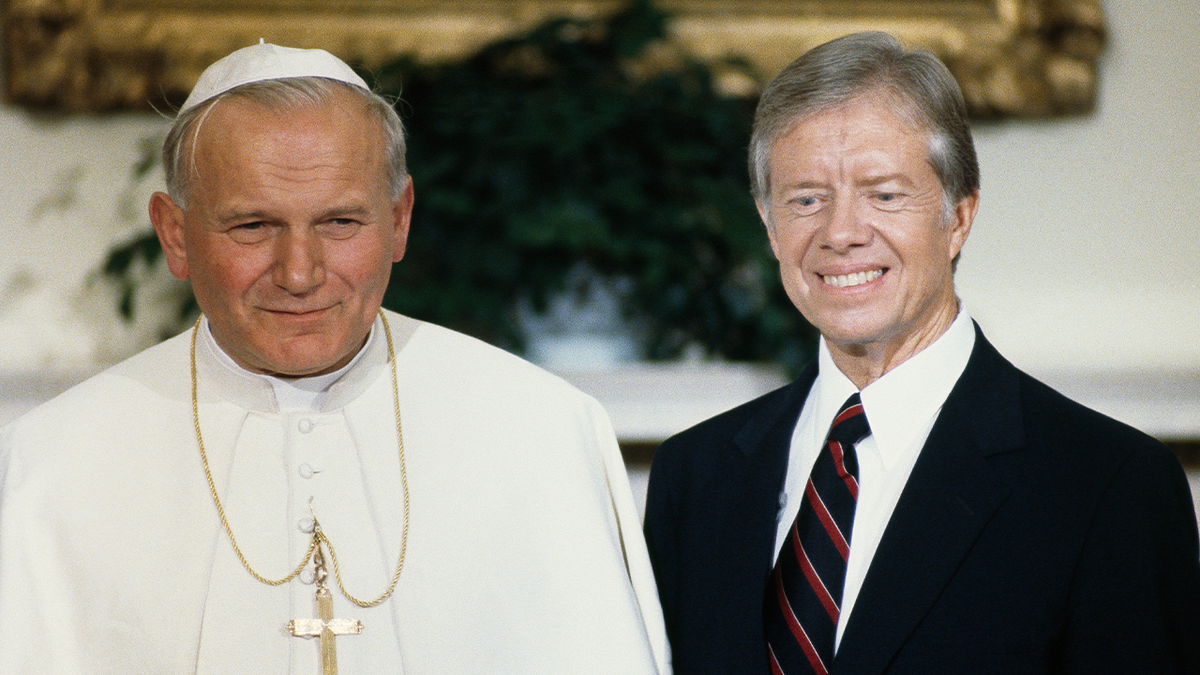
Pope John Paul II is welcomed to the White House by President Jimmy Carter. (Michael Norcia/Sygma via Getty Images)
First papal visit to the White House
It wasn’t until 1979, during President Jimmy Carter’s administration, that the pontiff traveled to Washington and joined the president for a meeting at the White House.
Pope John Paul II was invited to the White House amid his first papal pilgrimage to the United States in 1979, when he was well-received by U.S. Catholics and nicknamed «John Paul, Superstar» by Time magazine due to the lage crowds he drew amid his visits to Boston, New York and Denver.
POPE FRANCIS’ VIEWS ON BUSINESS, THE ECONOMY THROUGH THE YEARS
«Sharing the belief that respect for human rights and the dignity of the individual must be the cornerstone of the domestic and international policies of nations, the Pope and the President underlined their support for international covenants on human rights and for international organizations and entities which serve the cause of human rights,» the Carter administration said in a statement at the time of the visit. «They agreed that the international community must mobilize its concern and resources to deal with the problems of refugees, to protect human rights, and to prevent hunger and famine.»
A pope visiting the White House has been rarer than a president visiting the Vatican. Pope Benedict visited the White House in 2008 when he celebrated his 81st birthday with President George W. Bush, and Francis traveled to the White House in 2015 and met with President Barack Obama. Other popes have not met a president at the White House.

Pope Francis meets President Donald Trump and first lady Melania Trump at the Apostolic Palace on May 24, 2017, in Vatican City. (Vatican Pool/Getty Images)
CLICK HERE TO GET THE FOX NEWS APP
President Donald Trump, who had clashed with Pope Francis on environmental and political policies, is slated to travel to Vatican City later this week to attend the pope’s funeral Mass.
«Melania and I will be going to the funeral of Pope Francis, in Rome. We look forward to being there!» the president posted Monday to Truth Social.
Vatican News & Updates,Pope Francis,White House,Roman Catholic,World
INTERNACIONAL
Rodrigo Paz, presidente electo de Bolivia: «La economía no es para el Estado, debe ser para la gente»
INTERNACIONAL
Teens who assaulted former DOGE staffer slapped with federal charges: ‘Need for accountability’
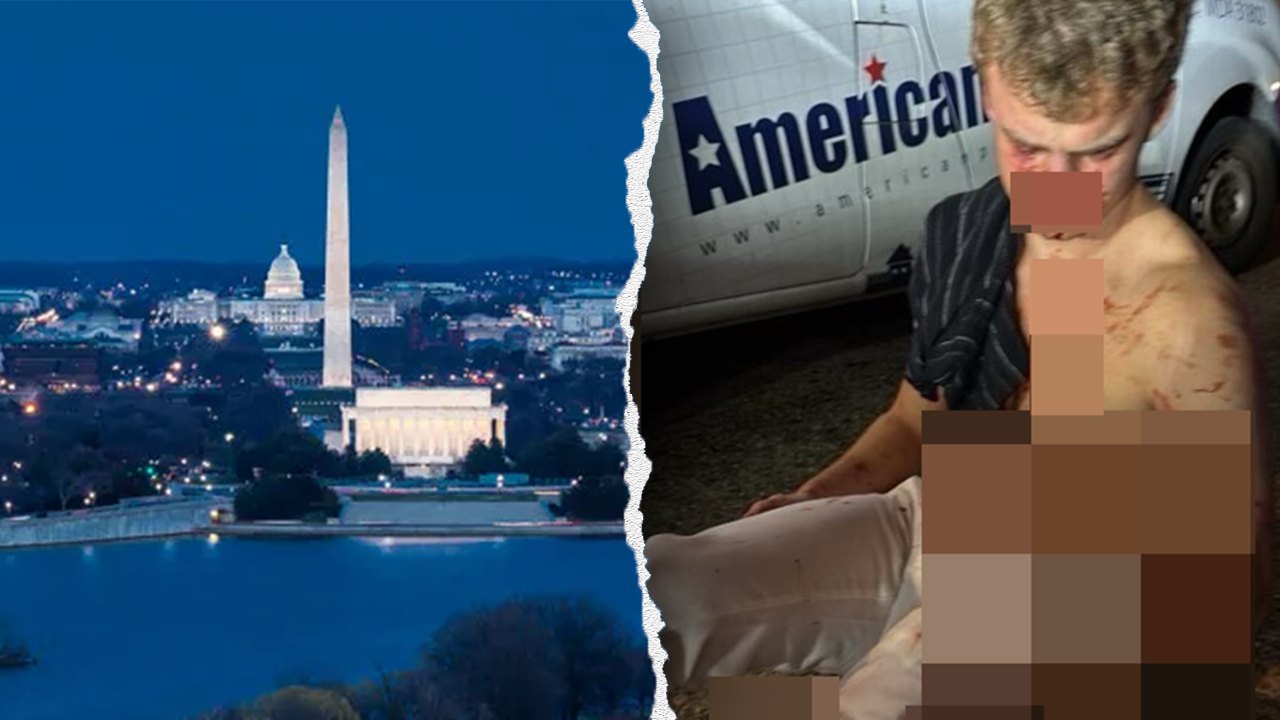
NEWYou can now listen to Fox News articles!
Two teenagers, Lawrence Cotton Powell, 19, and Anthony Taylor, 18, who are linked to the beating of former DOGE staffer Edward Coristine in Washington, D.C., are now facing federal charges for a series of assaults and attempted carjacking.
The teens are charged with two counts of first-degree robbery and assault with intent to commit robbery, each of which is punishable by up to 15 years in prison, and attempted carjacking, which holds a penalty of up to five years.
U.S. Attorney for the District of Columbia Jeannine Pirro announced the charges in a press conference on Monday.
Pirro said the charges highlight «the need for accountability of offenders in the district.»
‘RADICAL’ DC OFFICIALS TREATED OFFICERS ‘LIKE CRAP,’ POLICE LEADER SAYS – 7 ATTACKS THAT LED TO TRUMP TAKEOVER
Former DOGE staffer Edward Coristine was assaulted by multiple teenagers in Washington, D.C. earlier this year. (Visions of America/Universal Images Group via Getty Images; @realDonaldTrump via Truth Social)
«What’s significant about this case is the history of Lawrence Cotton Powell,» she said.
Pirro said that despite being a repeat offender and already having a criminal history involving assault, Powell had been let off by D.C. judges shortly before he beat and robbed Coristine. She said that despite the U.S. Attorney’s office requesting jail time for Powell, his sentence was suspended by a local judge on July 25, just days before he attacked Coristine.
«After a felony of attempted robbery conviction, after a violation of probation, after a second crime, after a second conviction, after no compliance with CSOSA [Court Services and Offender Supervision Agency], the judges say, ‘Do better,’ and they let him go. And guess what? Within ten days, he’s at it again,» said Pirro.
According to Pirro, Powell and Taylor, with a gang of several others, assaulted and robbed another individual just minutes before attacking Coristine. Pirro said that upon seeing the gang of approximately ten suspects approaching, Coristine pushed a female friend into her car in an attempt to keep her safe.
TEENS WHO ASSAULTED FORMER DOGE STAFFER GET NO JAIL TIME WITH PROBATION-ONLY SENTENCES
«He was then attacked by multiple suspects who then punched him repeatedly, causing significant injuries to him. They got him on the ground, and as they were doing so, they demanded the car from the woman who was inside the car and had already locked the car. They were banging on the car, they were pulling on the car door, trying to get the car open, and were telling the woman in the car to hand over the keys,» said Pirro.
Pirro urged the D.C. City Council to «reconsider» its laws that «allow these young people to go out and victimize, revictimize and keep revictimizing and putting the safety of the citizens who live, work and visit here at risk.»
«I ask them to stand up finally and send a clear message, because the people of this district deserve no less than safety,» said Pirro.
Coristine was assaulted at approximately 3 a.m. by a group of teenagers in D.C.’s Logan Circle neighborhood.
A photo of a bloodied Coristine went viral, sparking outrage over the city’s handling of crime and drawing President Donald Trump’s attention. The president slammed D.C., saying crime in the city was «totally out of control.»
BIDEN JUDGE FREES TEENS TIED TO EX-DOGE STAFFER’S ASSAULT AS TRUMP CRACKS DOWN ON CRIME
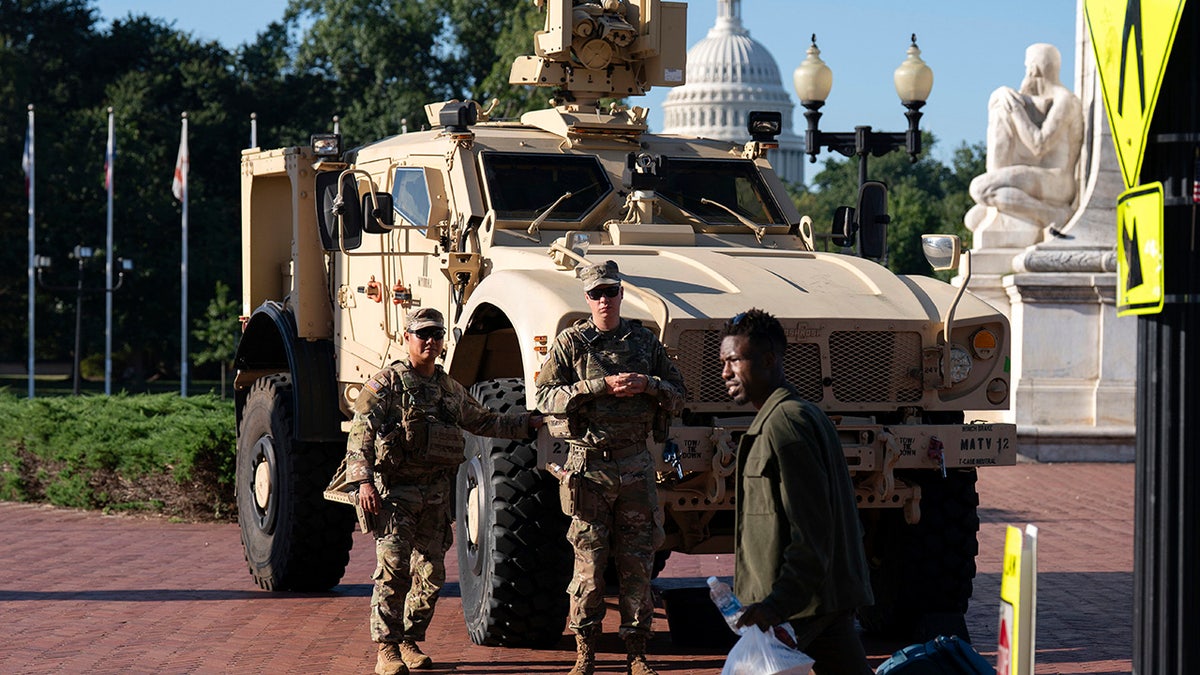
Members of the District of Columbia National Guard standing next to an MATV vehicle scan the area as they patrol outside Union Station, Monday, Sept. 1, 2025, in Washington. (Jose Luis Magana/AP Photo)
«Local ‘youths’ and gang members, some only 14, 15, and 16-years-old, are randomly attacking, mugging, maiming, and shooting innocent citizens, at the same time knowing that they will be almost immediately released. They are not afraid of Law Enforcement because they know nothing ever happens to them, but it’s going to happen now!» Trump wrote on Truth Social.
Days later, Trump directed federal law enforcement to increase its presence throughout D.C. He also deployed members of the National Guard to patrol the city and assumed federal control of the D.C. Metropolitan Police Department.
washington dc,crime world,doge,donald trump
INTERNACIONAL
Sanae Takaichi fue elegida primera ministra de Japón y se convirtió en la primera mujer en ocupar el cargo

El Parlamento de Japón eligió este martes a la ultraconservadora Sanae Takaichi como la primera mujer primera ministra del país, un día después de que su debilitado partido firmara un acuerdo de coalición con una nueva fuerza política que podría empujar al bloque gobernante aún más hacia la derecha.
Takaichi reemplaza a Shigeru Ishiba, poniendo fin a un vacío político de tres meses y a las disputas internas que siguieron a la derrota electoral del Partido Liberal Democrático (PLD) en julio.
Ishiba, que ocupó el cargo durante solo un año, presentó su renuncia junto con la de su gabinete horas antes, allanando el camino para su sucesora.
La alianza improvisada del PLD con el Partido de Innovación de Japón (Ishin no Kai), con sede en Osaka y de tendencia derechista, aseguró la elección de Takaichi, ya que la oposición no logró unirse. Sin embargo, esta coalición aún no alcanza la mayoría en ambas cámaras del Parlamento, lo que obligará al nuevo gobierno a buscar acuerdos con otros partidos opositores para aprobar leyes, un escenario que podría hacer que su mandato sea inestable y de corta duración.
“La estabilidad política es esencial en este momento”, declaró Takaichi durante la ceremonia de firma del acuerdo con el líder del Ishin no Kai y gobernador de Osaka, Hirofumi Yoshimura. “Sin estabilidad, no podemos impulsar medidas para una economía sólida ni una diplomacia fuerte”.
Ambos partidos suscribieron un pacto de gobierno que refleja las posturas nacionalistas y de línea dura de Takaichi.
El acuerdo de último momento se alcanzó después de que el PLD perdiera a su antiguo socio de coalición, Komeito, un partido respaldado por un movimiento budista y con una orientación más centrista y pacifista. La ruptura amenazó con provocar un cambio de poder en Japón, donde el PLD ha gobernado casi de forma ininterrumpida durante décadas.
Más tarde este martes, Takaichi, de 64 años, presentará un gabinete con varios aliados del influyente dirigente del PLD Taro Aso, así como con otros legisladores que la apoyaron en la votación interna del partido. El Ishin no Kai no ocupará cargos ministeriales por el momento, hasta que exista plena confianza en la alianza con el PLD, aclaró Yoshimura.
Takaichi enfrenta un ajustado calendario político, que incluye un discurso de política general esta semana, reuniones con el presidente de Estados Unidos, Donald Trump, y varias cumbres regionales. Además, deberá abordar con urgencia la suba de precios y preparar un paquete de medidas económicas antes de fin de año para responder al creciente malestar público.
Aunque se convierte en la primera mujer en liderar el gobierno japonés, Takaichi no ha mostrado interés en promover la igualdad de género ni la diversidad.
Conocida por bloquear iniciativas de avance femenino, defiende la sucesión imperial exclusivamente masculina y se opone tanto al matrimonio igualitario como a permitir que las parejas casadas mantengan apellidos separados.
Discípula del asesinado ex primer ministro Shinzo Abe, se espera que Takaichi intente replicar sus políticas, entre ellas el fortalecimiento militar, los estímulos económicos y la reforma de la constitución pacifista. Sin embargo, su capacidad para lograrlo dependerá de su frágil base parlamentaria.
La salida de Komeito de la coalición se debió a la gestión del PLD frente a los escándalos de fondos ilegales que provocaron derrotas electorales consecutivas, así como a las controversias revisionistas de Takaichi sobre el pasado bélico de Japón y sus visitas regulares al santuario Yasukuni, actos que Beijing y Seúl interpretan como una falta de arrepentimiento por la agresión japonesa durante la guerra.
En un intento por suavizar su imagen, Takaichi evitó visitar Yasukuni el viernes y en su lugar envió una ofrenda religiosa, un gesto que simboliza un tono más moderado en el inicio de su mandato.
(Con información de Associated Press)
Asia / Pacific

 CHIMENTOS2 días ago
CHIMENTOS2 días agoLa fuerte actitud de Manu Urcera con Indiana Cubero que reveló la verdad de la interna familiar: “El saludo del piloto a la hija de Nicole Neumann por su cumpleaños”

 POLITICA3 días ago
POLITICA3 días agoUn juez federal rechazó el habeas corpus presentado por Lázaro Báez y ordenó trasladarlo a la cárcel de Ezeiza

 CHIMENTOS1 día ago
CHIMENTOS1 día agoLa cruda confesión del Turco Naim a 1 año de la separación de Emilia Attias: «Me di cuenta que hay que aprender a estar solo»














